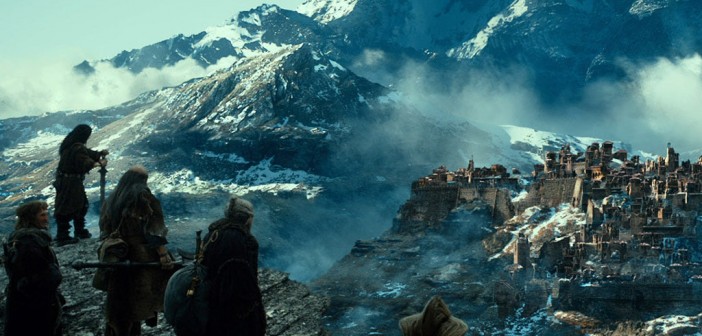Ever since 2012’s “The Hobbit: An Unexpected Journey” reintroduced audiences to Middle-earth, fans of the series have eagerly awaited director Peter Jackson’s next step into the world of J.R.R. Tolkien. Although the first movie in the “Hobbit” trilogy may have suffered from a few pacing problems as it introduced its incredibly large cast of principals, “The Desolation of Smaug” seems to have learned a few important lessons from its predecessor and provides a tighter and more epic story, if not a perfect one.
The second film brings audiences back to where the first film left off, with the company of adventurers having just caught sight of the Lonely Mountain. The group splits up, with the dwarves and Bilbo traveling through Mirkwood while Gandalf leaves to inform his fellow wizards about the threat posed by the Necromancer. After a run-in with giant spiders, the main company makes its way through the lands of the Wood Elves and the men of Lake-town, meeting some of the major characters of the novel before moving on to Smaug’s lair.
The main cast returns, of course, with Martin Freeman taking the lead as the reluctant gourmand turned burglar turned hero, Bilbo Baggins; Ian McKellen reprising his iconic role as Gandalf; and Richard Armitage, Ken Stott, and Graham McTavish playing the leads among the dwarven adventurers. Fans of Doctor Who will be glad to see Sylvester McCoy return in his scene-stealing best as Radagast the Brown, and Orlando Bloom steps back into the elven boots of Legolas, the archer from the “Lord of the Rings” trilogy. Lee Pace gets more screen time as Thranduil, the elven king whom Thorin blames for the loss of his homeland.
Joining the cast are Benedict Cumberbatch as the dragon Smaug, the central foe of the trilogy, and Luke Evans as Bard the bowman, the one warrior who may hold the key to defeating the dragon. Mikael Persbrandt takes advantage of Peter Jackson’s skill at mixing actor scales to play the gigantic shapeshifter Beorn, a man who can take the form of an enormous bear. Evangeline Lilly is the most notable addition, as her character Tauriel did not appear in the original story but was created to provide a more diverse onscreen presence and a new narrative angle for the tale. Stephen Fry turns in a memorable cameo as the Master of Lake-town, and eagle-eyed fans may catch Stephen Colbert in his walk-on role as one of the Lake-town citizens.
The most notable difference between “The Desolation of Smaug” and the first “Hobbit” film is the pacing. Jackson gets the action going much more quickly this time around, since he doesn’t have to worry about introducing the enormous cast to viewers. Backed by the usual impeccable CGI work from Weta, the action sequences are fierce and fast, and the spiders of Mirkwood are creepy and skittery enough to send any arachnophobes out to the snack bar in a cold sweat. Benedict Cumberbatch’s memorable turn as Smaug also benefits from digital assistance, as the filmmakers used motion-capture technology to allow the actor to imbue the sinuous dragon with his own movements in much the same way Andy Serkis lent his own physicality to the vile Gollum in earlier films. The prosthetic work is also top notch, with dwarven actors rendered almost unrecognizable but still able to emote warmly through the heavy makeup and elaborately designed beards. The best effects, however, are always the natural ones found in New Zealand: those breathtaking it-can’t-be-real landscapes that Jackson always seems to find for his most majestic scenes.
Although the film moves faster than its predecessor, it does show a few thin spots that obviously came about when the two-film series expanded to a trilogy. The pacing of the earliest scenes seems a bit off, but it is easy to become too swept up in the beautiful vistas and fierce action to really notice. Conservative Tolkien fans may take issue with the addition of Tauriel to the story, but the new perspective and emotional strength she adds to the tale will be welcomed by most.
“The Hobbit: The Desolation of Smaug” may leave hardcore fans with a few quibbles, but for those who enjoyed the “Lord of the Rings” trilogy, it’s a welcome return to familiar ground. The most frustrating thing about the movie is undoubtedly the one-year wait audiences will have to endure before experiencing the climax of the tale, the great battle only hinted at in the second installment. Fortunately, this second installment has plenty to tide viewers over and keep them interested for one last trip back to the Shire.

